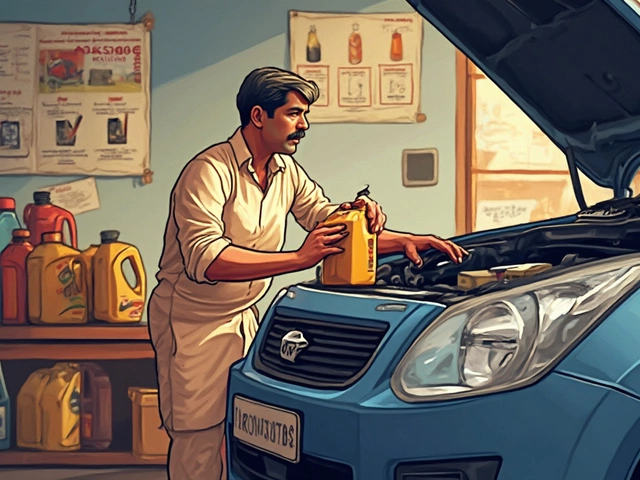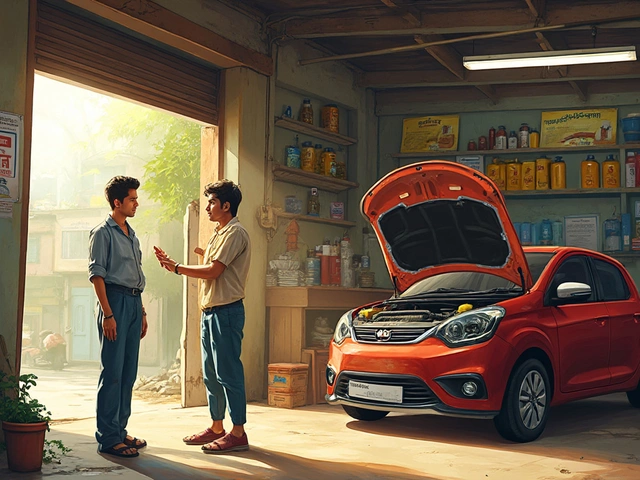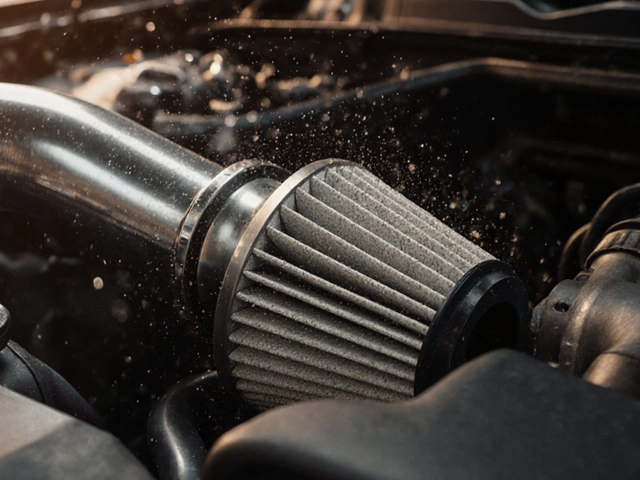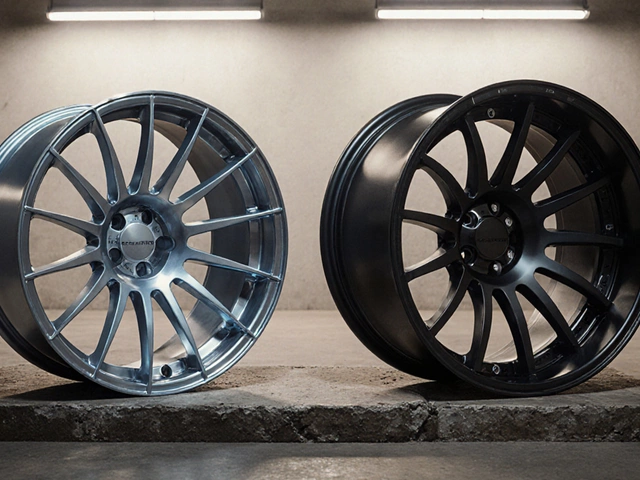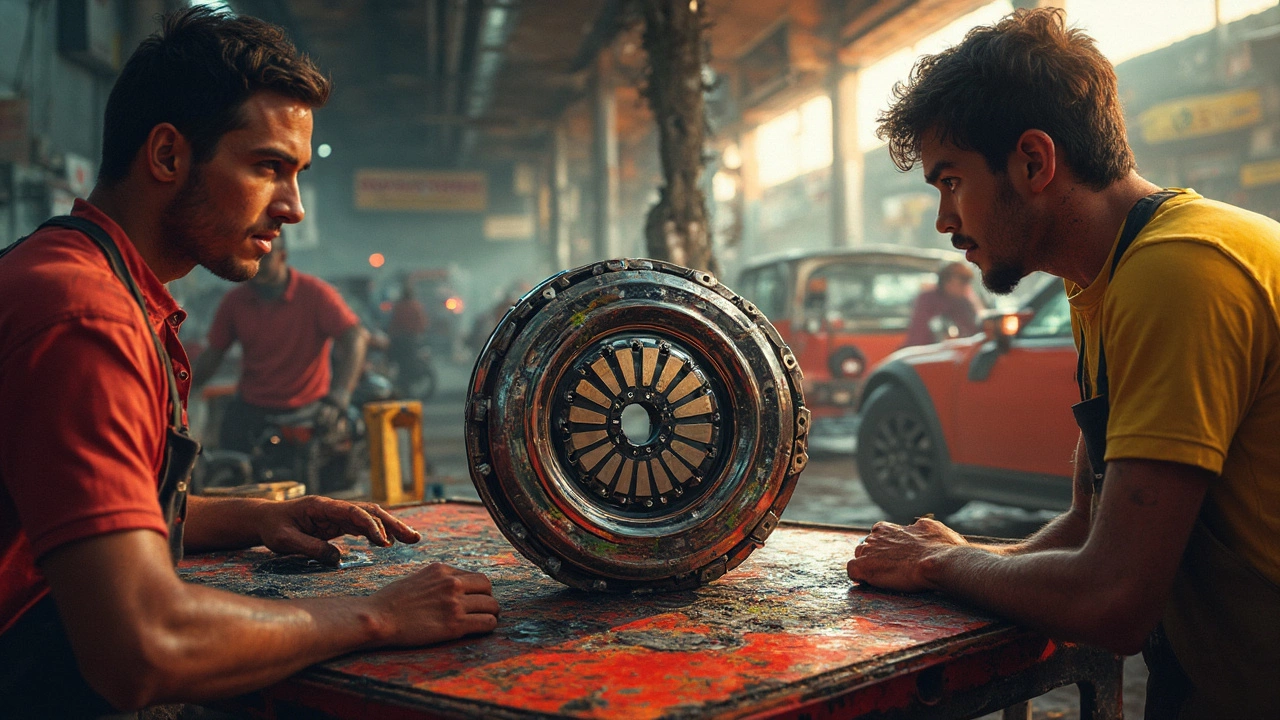
Ever wondered what makes a Stage 2 clutch kit a hot topic among car enthusiasts? It’s that magic upgrade that lets your ride handle more power without breaking a sweat. You might think it's just about gaining more torque—well, it's about that, but also so much more.
First off, changing your regular clutch to a Stage 2 is like switching from running shoes to high-performance spikes; they’re both meant for moving fast, but the latter is specialized for when things get serious. Whether you're racing or adding serious mods to your car, this upgrade allows you to tap into the extra oomph your engine can provide without slipping.
You may ask, why all the fuss over extra power handling? Imagine you're aiming to boost your car’s output through modifications. Installing a standard clutch to manage this newfound power could feel like fixing a leak with duct tape. A Stage 2 kit is crafted for reliability, made from beefier materials that deliver strong engagement, resist heat better, and last longer under stress.
- Introduction to Clutch Kits
- Differences Between Stage 1 and Stage 2 Clutch Kits
- Benefits of Upgrading to a Stage 2 Clutch
- Who Needs a Stage 2 Clutch Kit?
- Installation Tips and Considerations
- Maintenance and Longevity of Stage 2 Clutches
Introduction to Clutch Kits
Alright, so let's tackle what exactly clutch kits do before diving into the specifics of a Stage 2 clutch. Simply put, a clutch kit is like the control center for the manual transmission in your vehicle. It's responsible for engaging and disengaging the engine from the transmission—allowing you to shift gears smoothly without grinding. Without it, your car would be nothing more than a pretty lawn ornament.
A basic clutch kit generally includes a pressure plate, a clutch disc, and a release bearing—three critical components that work together to ensure your vehicle runs smoothly. The clutch disc acts like a mediator, connecting the engine's rotating flywheel with the transmission's input shaft. Activating the clutch pedal disengages the disc, letting you switch gears without forcing the engine to stall.
Components of a Clutch Kit
Getting into specifics, here's what each part does:
- Pressure Plate: This component clamps the clutch disc against the flywheel. When you press your clutch pedal, the pressure plate releases the disc, letting you change gears smoothly.
- Clutch Disc: The link connecting the engine to the transmission. Think of it as the bridge between power and movement.
- Release Bearing: Responsible for allowing the pressure plate to disengage the clutch disc from the flywheel when you press the clutch pedal.
Now, why do we even consider upgrading our clutch kits? It all boils down to performance. Basic clutch kits are fine for factory setups, but once we start pushing limits with more horsepower and torque, a stronger setup becomes necessary. That's where Stage 1, 2, and even beyond come into play, each designed for specific performance needs.
| Type | Power Capacity | Typical Use |
|---|---|---|
| Stage 1 | 15% more torque | Daily driving with mild mods |
| Stage 2 | Up to 30% more torque | Track days and aggressive mods |
As we dive into more about Stage 2 clutch kits, remember that while they promise better performance, they're not just plug-and-play. Each upgrade comes with its intricacies, but that's what keeps the car world exciting, right?
Differences Between Stage 1 and Stage 2 Clutch Kits
You're curious about whether a Stage 2 clutch is worth the upgrade from Stage 1, huh? Here's what you need to know: Stage 1 and Stage 2 are both steps up from your factory clutch, but they're built for slightly different demands and uses.
Stage 1 clutch kits are basically the gateway for those inching into the world of upgraded performance. They're designed to handle a notch above standard power levels, making them ideal for daily drivers who occasionally like to push their car a bit. If your car mostly hauls groceries and kids but you’ve got a few performance mods, Stage 1 might be up your alley.
Stage 2 clutch kits, on the other hand, mean business. They’re engineered to tackle much higher torque and increased power levels, making them suitable for vehicles with significant performance upgrades. So, if you’re adding turbochargers or playing with engine tunes that push your car into race-car territory, Stage 2 provides the extra grip and durability you need.
Construction and Composition
Stage 2 clutches often feature more aggressive friction material, like carbon or Kevlar composites, compared to the more organic or mild materials used in Stage 1. This material choice in Stage 2 offers much better heat resistance and friction coefficient, which translates into less wear and better performance over time.
Performance Goals
With Stage 1, you're still in the realm of comfort. The drive feels almost like stock, but with noticeable improvements in handling moderate upgrades. Stage 2, however, sacrifices a bit of that everyday smoothness for aggressive performance. It's not going to be as comfy as your couch-friendly drive, but it’s a necessary step if serious street racing is your game.
Price and Investment
From a budget perspective, Stage 1 kits generally come at a lower cost compared to Stage 2. Since Stage 2 is built to withstand more hardcore stress and fancy mods, it’s priced higher, but think of it as a necessary investment if you've got the need for speed.
Weighing the type of driving you do and the mods your car has been through, your choice between Stage 1 and Stage 2 clutch kits should come down to what will support your current and future driving ambitions. Need more punch and hold for significant power boosts? Stage 2 is calling your name.
Benefits of Upgrading to a Stage 2 Clutch
Swapping out for a Stage 2 clutch isn't just flexing your car know-how—this upgrade actually brings serious advantages, especially if you’re serious about performance. Let's get into why making the move to this clutch can be a game-changer.
Enhanced Torque Management
A major perk of a Stage 2 clutch is its ability to handle more torque. If you’ve ever considered turbocharging your ride or increasing the horsepower, a regular clutch might not cut it. This clutch allows your car to handle that extra muscle without slipping, ensuring more power is transferred to the wheels.
Durability and Longevity
Using robust and durable materials, a Stage 2 clutch can take more heat and pressure, making it last longer than your standard clutch. This means fewer replacements and repairs, saving you time and money in the long run.
Improved Engagement and Performance
This clutch offers stronger engagement which means when you hit the pedal, the power transfer is smoother and more immediate. It provides an overall enhanced driving experience, especially when you’re pushing your vehicle to its limits.
Great for Modified Engines
If you've tweaked your engine for more power, a Stage 2 clutch is almost a necessity. It’s designed to handle what a souped-up engine throws at it, giving that solid grip without worrying about clutch slip.
Value for Enthusiasts
For car enthusiasts who love track days or spirited drives, the performance benefits of a Stage 2 clutch can make every outing a joy. It strikes a balance between daily driving comfort and high-performance demands.
To put it all into perspective, here’s a quick comparison of how a Stage 2 clutch stacks up against a basic clutch:
| Feature | Standard Clutch | Stage 2 Clutch |
|---|---|---|
| Torque Handling | Limited | High |
| Durability | Moderate | High |
| Performance | Basic | Enhanced |
| Best Use | Everyday Driving | Modified Engines |
Overall, if you're cranking up your car’s power or just looking for better performance, a Stage 2 clutch might be one of the best upgrades you could get.
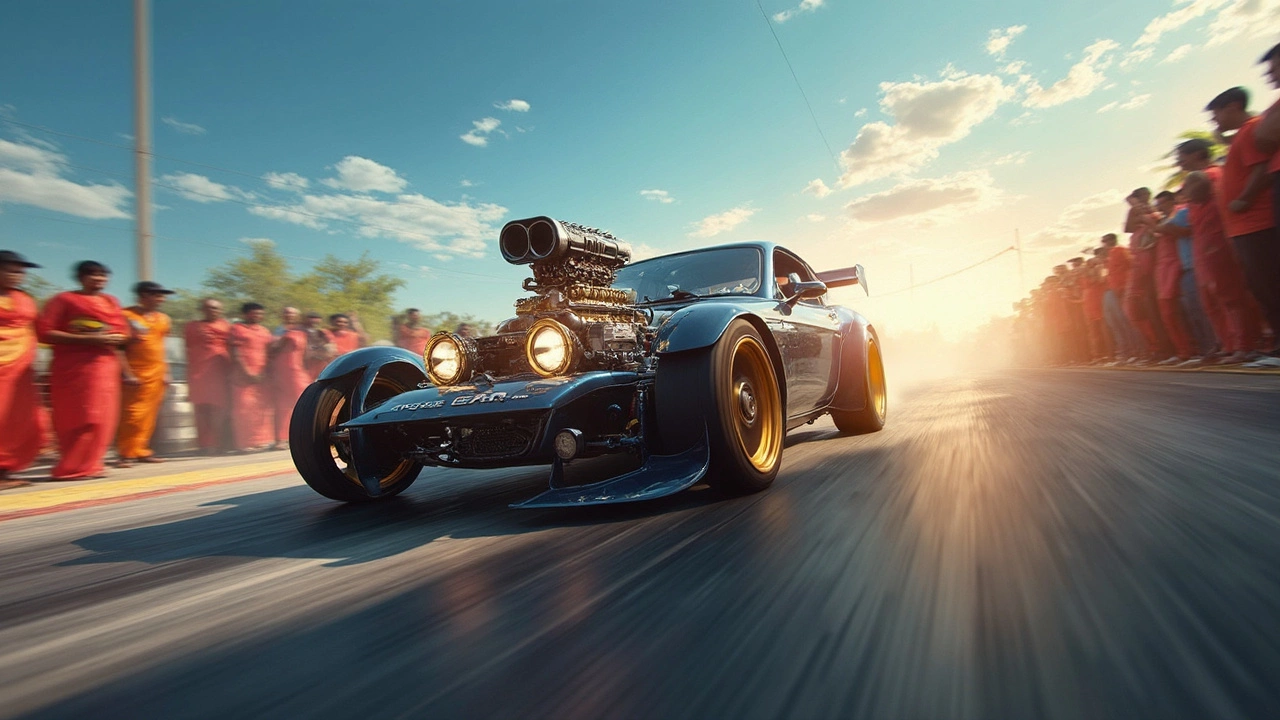
Who Needs a Stage 2 Clutch Kit?
So, who exactly needs a Stage 2 clutch kit? Well, if your idea of a good time involves pushing your car to its limits, then you might be the ideal candidate. Stage 2 clutches are particularly popular with those who dive deep into the world of automotive modifications. We're talking about folks who don't just see cars as a way to get from A to B but as machines that can be finely tuned for speed, power, and pure driving pleasure.
Car Enthusiasts and Racers
If you’re hitting the track or the drag strip often, swapping to a Stage 2 is a no-brainer. The increased clamping force and durability help manage higher speeds and quick starts that a regular clutch just can't handle. For serious racers, upgrading to a Stage 2 clutch is like upgrading your sneakers before a sprint – it's all about performance.Modified Vehicles
If you've added mods to your car, like a turbocharger or a supercharger, your stock clutch might struggle to keep up. A Stage 2 clutch offers the additional muscle needed to handle the power these mods generate. Think of it as reinforcing the bridge before letting a parade of heavy trucks roll over it.Street Tuner Fans
Even if you’re not racing on the weekends, just tweaking your car for better street performance could mean a Stage 2 upgrade makes sense. It combines street functionality with the capability to manage increased power – a solid balance for daily drivers looking for an edge.DIY and Performance Hobbyists
Love getting your hands greasy? Hobbyists often find joy in the challenge of replacing and upgrading parts themselves. A Stage 2 clutch installation can be a rewarding project that arms you with practical know-how while enhancing car performance.Still on the fence? Consider this: a Stage 2 clutch is essentially an investment in reliable power handling. You’re not just adding capability, but ensuring that your car can handle future modifications and performance demands.
Installation Tips and Considerations
So, you've decided to go for a Stage 2 clutch kit. Great choice! But before you dive into the installation, there are a few things you should keep in mind to ensure a smooth process.
Tools and Preparation
Installing a clutch kit isn’t exactly a ‘grab a wrench and go’ job. First up, make sure you have a comprehensive tool set. Think about jacks, wrenches, socket sets, and a transmission jack if possible. It’s like a toolbox fashion show, and you want to be the best-dressed contender in the garage.
Clear a workspace where you can safely lift the car. You'll need to remove the transmission, and trust me, that's not something done in a crowded space. Safety comes first, so ensure your car's stable and your environment isn’t a trap waiting to spring.
Installation Steps
- Start by disconnecting the battery. Electricity and metal parts aren't the best of friends.
- Remove the driveshaft and make way for the transmission. This requires patience—there are no shortcuts here.
- Unbolt the old clutch and flywheel. Pay attention to the order you remove things; a quick phone pic helps if you can't trust your memory.
- Replace the flywheel if necessary. While this isn't always required, if it shows wear, a replacement is a good call.
- Install the new Stage 2 clutch kit. Use an alignment tool to make sure everything’s centered. Uneven fitment is a recipe for future headaches.
- Tighten all bolts in a star pattern to ensure an even installation.
- Reassemble everything you’ve taken apart in reverse order. Double-check connections, especially anything electrical.
Common Pitfalls
Sometimes, in their excitement, folks rush the process. Remember: torque specifications are there for a reason. Tightening bolts by feel? Not a good idea. Use a torque wrench to get it right.
Help and Resources
If you hit a snag, don't be afraid to check online forums or video tutorials. And if things go really sideways, professional help might be worth considering.
Also, consider switching out other wear-and-tear parts like the clutch slave cylinder while you're already in there. It’s a pain to disassemble things again down the line just for that.
| Component | Recommended Replacement Interval |
|---|---|
| Clutch Slave Cylinder | 50,000 miles |
| Flywheel | With every second clutch change |
Take your time, follow the steps, and your car will be ready to handle those extra horses with ease. Happy wrenching!
Maintenance and Longevity of Stage 2 Clutches
Taking care of your Stage 2 clutch isn't just about keeping things running smoothly. It's about making sure your investment lasts as long as possible. These clutches are designed for tough jobs, but they do need some love to keep performing at their best.
Regular Inspections
Schedule regular check-ups of your clutch system. Check for worn-out components or leaks in the hydraulic system. If you catch wear early, you'll prevent bigger problems down the line. Plus, it'll save you cash on costly replacements.
Proper Use
Abusing your clutch is a fast track to wear. Avoid riding the clutch pedal, which can cause unnecessary friction and heat. Instead, engage fully and then release it as quickly as possible. This maximizes your clutch's lifespan.
Monitor Driving Conditions
High-performance clutch kits like the Stage 2 thrive under certain conditions but can wear out quicker in stop-and-go traffic or extreme environments. Pay attention to how and where you drive.
Fluid Maintenance
Hydraulic clutches require fresh, clean fluid to work properly. Contaminated or old fluid can lead to poor performance or even failure. Regularly replace the fluid according to your vehicle's manual.
Signs of Wear
Stay alert to signs like a slipping clutch, strange noises when engaging, or a sticky pedal. These can indicate it's time for maintenance or replacement.
Expert Advice
While DIY is great, there are times when a seasoned mechanic's touch is needed. If you're not sure what's going on, don't hesitate to reach out for professional help.
Keeping these tips in mind will not only ensure the longevity of your clutch kit but will also keep your ride more enjoyable and safe. Treat your clutch right, and it will pay you back in performance and reliability.

